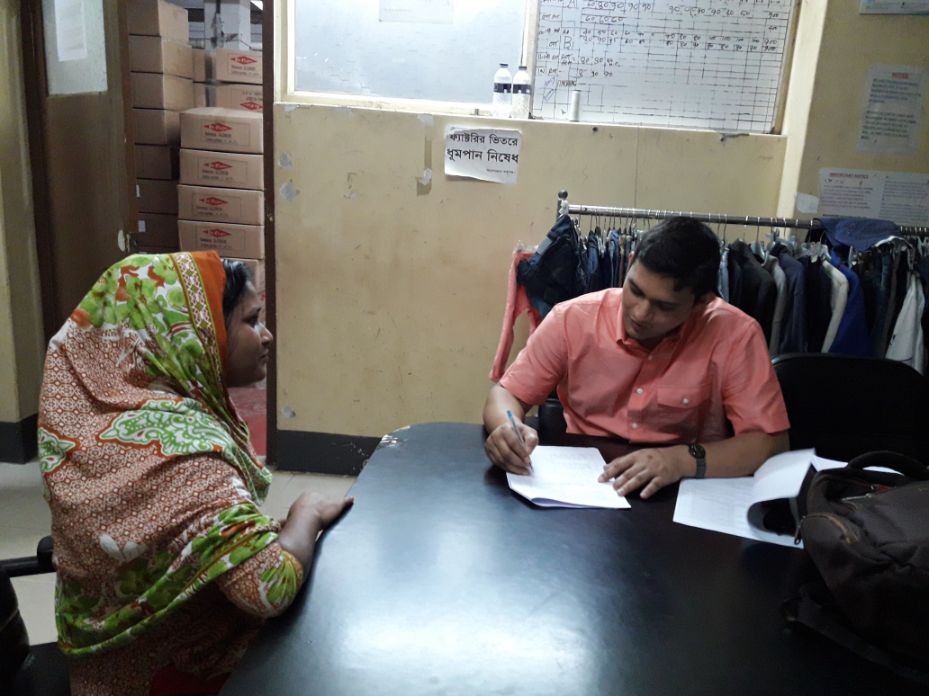When you put on a new dress or shirt, do you ever wonder about the people who stitched them - or the conditions under which they work? If the label says 'Made in Bangladesh', you have reason to be concerned.
University of New England PhD student Humayun Kabir has spent the past four years researching the working lives of people in the ready-made garment (mass-produced clothing) industry in his homeland. And the findings expose the very ugly side of international fashion.
Inspired by the horrific collapse of the Rana Plaza garment factories in 2013, which killed 1134 people and injured more than 2500 others, Humayun has sought to highlight the plight of some of the world's poorest employees. Although the building collapse attracted international attention at the time, some 109 accidents, including several major fires, have since cost hundreds more lives. Even the worst industrial accidents on record have not been enough to prompt lasting improvements to safety standards and labour conditions.
 Humayun says about 4500 Bangladeshi factories employ more than 4 million workers - 80 per cent of them girls and women - and many staff are at the mercy of unscrupulous factory owners. Poorly educated and unskilled, they have little power to object to unsafe work practices or to complain about their poor salaries, long hours, and a high rate of work-related disease and injury.
Humayun says about 4500 Bangladeshi factories employ more than 4 million workers - 80 per cent of them girls and women - and many staff are at the mercy of unscrupulous factory owners. Poorly educated and unskilled, they have little power to object to unsafe work practices or to complain about their poor salaries, long hours, and a high rate of work-related disease and injury.
"Conditions vary between factories, but many are unhygienic, noisy and dusty, with sometimes 1000 people crammed into a single room," Humayun says. "Common health problems include headaches, fever, diarrhoea, colds/flu, respiratory infections and bodily pain from the repetitive and intense work. These were frequently suffered by the 422 people I interviewed in 2018, and they have no voice."
Further research, to record the personal experiences of 17 survivors of the Rana Plaza disaster, was so traumatic for Humayun that he had to limit his interviews to one per day. Most workers had received inappropriate financial compensation and were unable to support their struggling families, leading to suicidal thoughts among some.
"Many of the ready-made garment workers used to work as maid servants: in the garment sector they think their life is going to be better, that they can make more money - but they are being exploited," Humayun says. "There are many women waiting to work in the factories, so if someone complains they are sacked, and factory owners can easily bring in another."
Ultimately, Humayun hopes his research will highlight the human cost of purchasing cheaper clothing. "Many international brands, including Australian brands, have their clothes manufactured in Bangladesh," he says. "Anyone buying those clothes needs to understand the poor conditions, security and sexual harassment in those workplaces, and the physical and psychological stress workers are subjected to.
Every worker has an hourly or daily production target; if they fail to meet it they are verbally and in some cases physically abused.
In comparing worker experiences in two big cities - the Bangladeshi capital of Dhaka and Chittagong - Humayun has uncovered that factory owners commonly hide the reality of working conditions from the international community. The factory owners’ association, the Bangladesh Garment Manufacturers and Exporters Association, strongly lobbies the ruling political party, so owners are effectively immune from prosecution.
Conditions worsen during COVID peak
Humayun spent eight months in his home village when international borders and flights closed. As a result of COVID-19 and the associated lockdowns, factory closures and supply chain disruptions, many people lost their jobs as clothing orders valued at $3 billion were suspended. Already-vulnerable people faced starvation. One national newspaper reported in May that a couple working in a garment factory near Dhaka sought to sell their newborn baby because they could not afford the hospital bill for the child's birth.
I want people buying cheap clothes to understand who made that item of clothing and why it is so cheap.
 "I don't want consumers to boycott clothes from Bangladesh - that would potentially make thousands of poor people jobless. But I do want to see positive changes and for these workers to be able to assert their humanitarian rights. As consumers, we can favour clothes from those stores that support safe factories, and be prepared to pay a little more for clothing so that factory owners can improve conditions for workers."
"I don't want consumers to boycott clothes from Bangladesh - that would potentially make thousands of poor people jobless. But I do want to see positive changes and for these workers to be able to assert their humanitarian rights. As consumers, we can favour clothes from those stores that support safe factories, and be prepared to pay a little more for clothing so that factory owners can improve conditions for workers."
"It's unimaginable what's going on and we have to find ways to end the exploitation cycles. Ready-made garment workers have the right to work in an environment that is safe and doesn't risk their health."
It's been a tumultuous year for Humayun, who was caught in Bangladesh for eight months after he travelled home to visit his ill mother, before finally being granted a humanitarian visa and securing a coveted seat on an expensive flight home.
Now, the researcher is wrapping up his findings. His UNE scholarship has been extended until June 2021 and UNE International has agreed to contribute $3000 towards the expense of his travels, including 14 days in hotel quarantine in Sydney.


